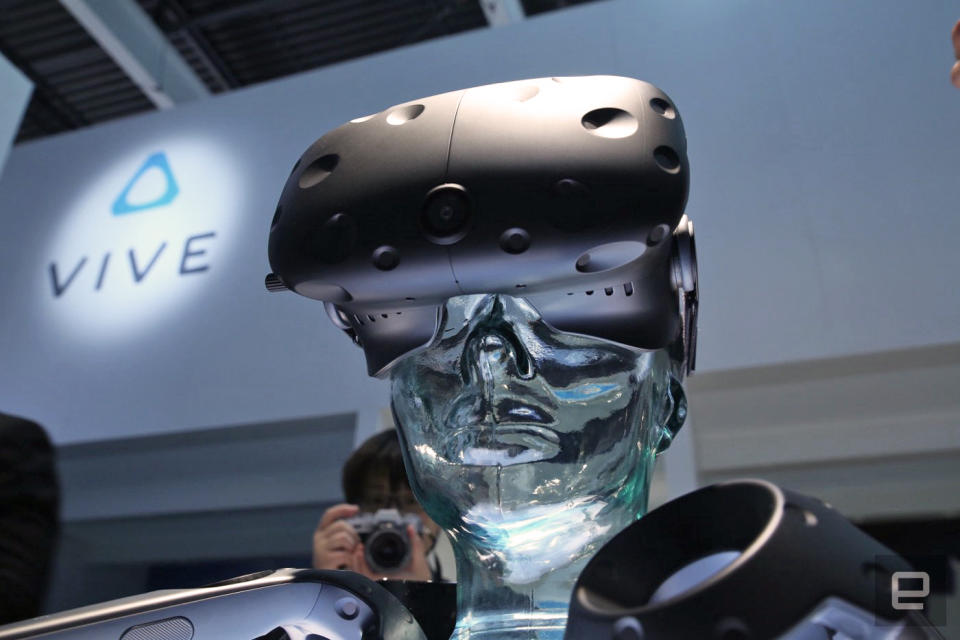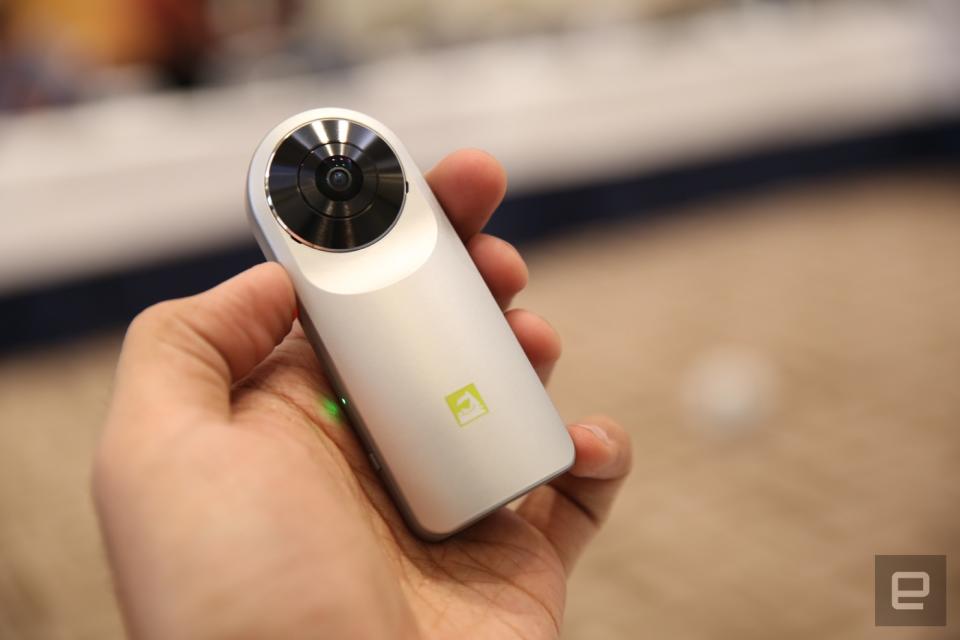MWC Revisited: Virtual reality is here to stay
VR was back in force at Mobile World Congress.

With Mobile World Congress done and dusted, it's time to take stock of what we've seen over the past week. Sure, we were treated to the usual menagerie of mobile devices, but for the second year running, virtual reality played a big part of the proceedings. Here's our official scorecard for the new, not-actually-that-mobile part of Mobile World Congress.
Samsung has a complete VR solution

Many were doubtful when Samsung first unveiled its Gear VR headset in 2014. Doubtful that mobile VR would ever amount to anything, and doubtful that Samsung was the company to make it happen. Two years on, and the device is now a consumer-ready product, compatible with all of Samsung's recent high-end phones. And that was the first VR win for Samsung at MWC. No, not forcing hundreds of people to wear its VR headset; it was the fact that its new flagships (the Galaxy S7 and S7 Edge) are both compatible with the Gear VR. That means its most fervent fans don't need to buy yet another Gear; they can just slot in their new phone. A full six devices are compatible with the VR headset.
Samsung partnered with Oculus on the development of the Gear VR, and that's made for a richer mobile VR experience than you can find elsewhere. Highly rated games like Land's End and Gunjack make extensive use of developer APIs created by Samsung and Oculus, and because of this they're exclusive to the platform.
At MWC this year, Samsung unveiled yet another piece of the puzzle: the Gear 360. It's a 360-degree video camera that syncs with the company's latest flagships to make shooting and editing VR-ready video way easier than it's been before. There are still questions regarding the price, but we expect it to be fairly cheap. And that makes Samsung, against all odds, perhaps the only company with an end-to-end VR solution. It's got the APIs for developers to create games, apps and experiences; it's got a 360-degree video camera for users to create their own content; and, of course, it's got the VR headset to jump into.
Score: 360 gears.
HTC is ready to go

Sure, HTC is a mobile company at heart, but the Vive has very little to do with mobile. It requires just as powerful a PC as the Oculus Rift does, after all. Nonetheless, HTC was at Mobile World Congress in force showing off the headset along with a few refreshed demos. The biggest news of HTC's show, though, was the price of the consumer edition: $799.
That seems like a lot of money, but you're getting a little more for that than you would with the $599 Oculus Rift. The Vive comes with sensors that offer full-body tracking, and a front-facing camera. HTC and Valve have also developed a Chaperone system that allows you to stay connected with the world around you. It does this by tracking your body's position and also adding information from a front-facing camera over your virtual view. The final added feature is Vive Phone Services, which lets you receive and respond to calls and messages from your smartphone without taking off the headset.
Whether you think that's worth the extra $200 over the Oculus is really going to come down to which vision you believe in. Oculus, for now, is offering a mostly seated VR experience, while Valve and HTC think VR should mean standing up and moving around.
Score: 799 dollars.
LG is still figuring things out

Last year saw a tentative entrance to VR for LG in the form of a plastic version of Google Cardboard. This year, it's gone all out with a dedicated headset (part of its "Friends" accessory range) that plugs into the LG G5. Called the 360 VR, it promises to be more comfortable than other headsets, thanks largely to the reduced weight and bulk. But it doesn't really do anything more than put your phone into that Google Cardboard you got with The New York Times. When the most memorable part of your onstage pitch is that "this won't mess up your hair," you probably don't have that compelling a product.
LG has a 360-degree camera too: the 360 Cam. It's pretty similar to Samsung's take, with two wide-angle cameras combining to give the full field of view required. Unlike Samsung's, there's no live view via a phone, but other than that it seems like a capable tool. And that's kind of emblematic of LG's efforts in VR (and arguably at MWC in general): It's pushing out lots and lots of products, but without much thought as to how to improve on their competitors.
Score: 5 friends.
And the rest ...

Putting aside the litany of no-name manufacturers filling empty conference hall space with their derivative VR efforts, there were actually a few interesting developments away from Mobile World Congress' "big three." Dolby had a strong presence showing off 3D audio. Although we'd seen it all before, it's interesting to see it shopping its wares at a mobile conference. And there were also signs of VR further penetrating the industry: Alcatel OneTouch, for example, debuted a new handset, the Idol 4. While it looks like a great budget smartphone in its own right, what's truly interesting is ... its packaging. The Idol 4's box is a plastic affair that, when re-assembled, turns into a sturdy version of Google Cardboard.
Score: 1 touch.
